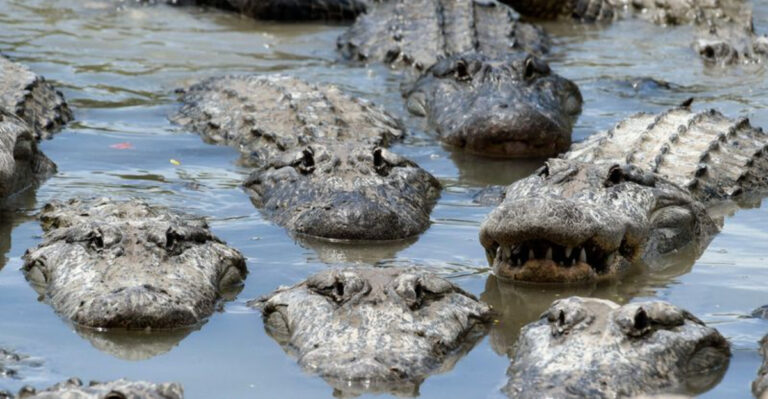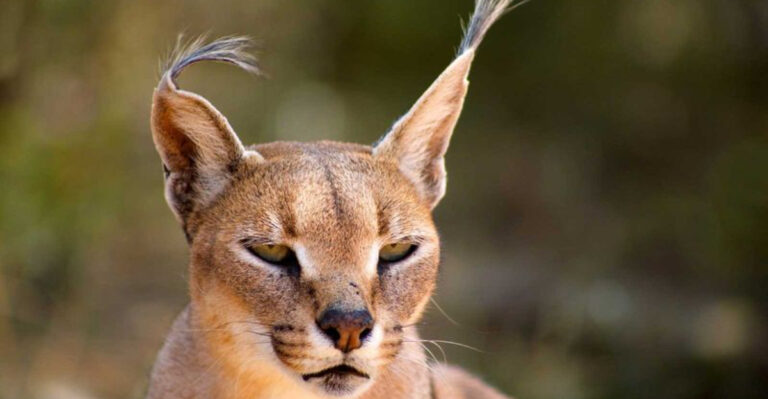‘Living Fossil’ Fish Photographed For First Time In 70 Million Years

Imagine swimming face-to-face with a creature scientists thought vanished alongside dinosaurs. The Coelacanth, often called a ‘living fossil,’ stunned the world when it reappeared after being presumed extinct for millions of years.
Recently photographed in its natural habitat for the first time, this remarkable fish offers us a rare glimpse into Earth’s distant past and challenges everything we thought we knew about evolution.
1. Rediscovering The Coelacanth, A ‘Living Fossil’

Shock rippled through the scientific community in 1938 when a South African museum curator spotted an unusual fish at a local market. Marjorie Courtenay-Latimer recognized it as something extraordinary – a species known only from fossils dating back over 360 million years.
What she found was a Coelacanth, thought extinct for 65 million years. Her discovery was like finding a living dinosaur walking among us.
2. The Coelacanth: A Fish From A Bygone Era

Sporting armor-like scales and peculiar lobed fins, the Coelacanth looks like it swam straight out of prehistory. These massive blue-gray fish can grow up to six feet long and weigh nearly 200 pounds.
Their most striking feature? Those fleshy, limb-like fins that move in an alternating pattern similar to how land animals walk. Scientists believe this characteristic represents a crucial evolutionary link between sea creatures and land animals.
3. How The Coelacanth Was Rediscovered In 1938

A fishing trawler hauled up something extraordinary off South Africa’s Chalumna River on December 22, 1938. The captain, unsure what to make of the strange blue fish, contacted local museum curator Marjorie Courtenay-Latimer.
Racing against decomposition in the summer heat, she preserved the specimen and sent sketches to fish expert J.L.B. Smith. His telegram reply: “MOST IMPORTANT PRESERVE SKELETON AND GILLS = FISH DESCRIBED.”
4. The Role Of Alexis And UNSEEN Expeditions In Capturing The Coelacanth

After decades of rare sightings, underwater photographer Alexis Chappuis and his UNSEEN Expeditions team accomplished the extraordinary. In pitch-black waters 400 feet deep off South Africa’s coast, they captured the first high-definition footage of a living Coelacanth in its natural habitat.
Using specialized rebreathers and cameras, they documented the ancient fish moving with its distinctive paddling motion among deep-sea caves. Their patience paid off after multiple dives spanning several weeks.
5. A ‘Living Fossil’: What Makes The Coelacanth So Unique?

Unlike most fish that have changed dramatically over millions of years, the Coelacanth remains nearly identical to its ancient ancestors. Its internal organs include a primitive lung-like structure and an electrosensory rostral organ in its snout.
Perhaps most fascinating is its notochord – a hollow, oil-filled tube that serves as a primitive backbone. Modern vertebrates typically replace this structure with a proper spine during development, but the Coelacanth keeps this ancient feature throughout its life.
6. A Peek Into Its World

Home sweet home for the Coelacanth lies in the ocean’s mysterious “twilight zone” – depths between 500-800 feet where sunlight barely penetrates. These fish shelter in volcanic caves during daylight hours, emerging only at night to hunt.
The extreme pressure and darkness at these depths kept them hidden from human eyes for centuries. Their habitat preference explains why they remained undiscovered for so long, despite reaching sizes comparable to a human.
7. First Photographs In 70 Million Years: A Historic Moment For Marine Biology

When Alexis Chappuis’s camera flashed in those inky depths, he captured something unseen since the time of T-Rex. The photographs revealed behaviors never before documented – how these ancient fish hover nearly motionless, using their unique fins for precise movements.
Marine biologists celebrated these images as revolutionary. For the first time, we could observe the Coelacanth’s natural swimming patterns, confirming theories about how these prehistoric creatures navigate their deep-sea realm.
8. The Coelacanth’s Journey Through Time

Fossils show Coelacanths first appeared roughly 400 million years ago, flourishing during the time of dinosaurs. Scientists identified over 120 species from fossil records, yet believed all had vanished during the mass extinction event 65 million years ago.
Fast forward to today, and we know of just two surviving species: the African Coelacanth and the Indonesian Coelacanth, discovered in 1997. Both represent the last remnants of an ancient lineage that once dominated Earth’s oceans.
9. Coelacanths And Their Role In Understanding Evolution

Scientists nickname the Coelacanth a “missing link” because it sits at a crucial evolutionary junction. Its fleshy, lobed fins contain bones arranged similarly to the limbs of land vertebrates, suggesting how fish might have first ventured onto shore.
Genetic studies of these living time capsules have revealed surprising insights. Their DNA evolves more slowly than almost any other vertebrate, helping explain why their appearance has barely changed in hundreds of millions of years.
10. Why The Coelacanth Was Thought To Be Extinct For So Long

Hiding in plain sight seems impossible for six-foot-long fish, yet Coelacanths managed exactly that for millions of years. Their deep-water habitat, far beyond the reach of traditional fishing methods, kept them concealed from human discovery.
Only when modern deep-sea fishing techniques expanded in the 20th century did these ancient swimmers finally resurface. Even now, encounters remain extremely rare – fewer than 300 specimens have ever been documented.
11. The Coelacanth’s Misleading Nickname: Why It’s Not A Dinosaur Fish

Headlines often call the Coelacanth a “dinosaur fish,” but this nickname misses the mark entirely. Coelacanths belong to a completely different evolutionary branch than dinosaurs – they’re actually lobe-finned fishes more closely related to lungfishes and tetrapods.
While they did swim alongside dinosaurs, they emerged much earlier in evolutionary history. The confusion stems from both groups being ancient and having survived relatively unchanged for millions of years.
12. Recent Coelacanth Sightings And The Impact On Conservation Efforts

Small communities of fishermen along the East African coast occasionally encounter Coelacanths as accidental bycatch. In 2018, a group of researchers in Madagascar documented a population living in underwater caves, suggesting these fish might be more widespread than previously thought.
Each new sighting fuels conservation efforts. The IUCN lists both Coelacanth species as critically endangered, with fewer than 1,000 African Coelacanths and even fewer Indonesian Coelacanths estimated to exist in the wild.
13. The Future Of The Coelacanth: Can We Protect This Ancient Species?

After surviving multiple mass extinctions over 400 million years, Coelacanths now face their greatest threat: humans. Deep-sea trawling accidentally captures these rare fish, while habitat destruction and ocean pollution further endanger their limited populations.
Conservation groups are working with local fishing communities to establish protected marine zones around known Coelacanth habitats. Modern technology, including ROVs and environmental DNA sampling, helps scientists track populations without disturbing these remarkable living fossils.






